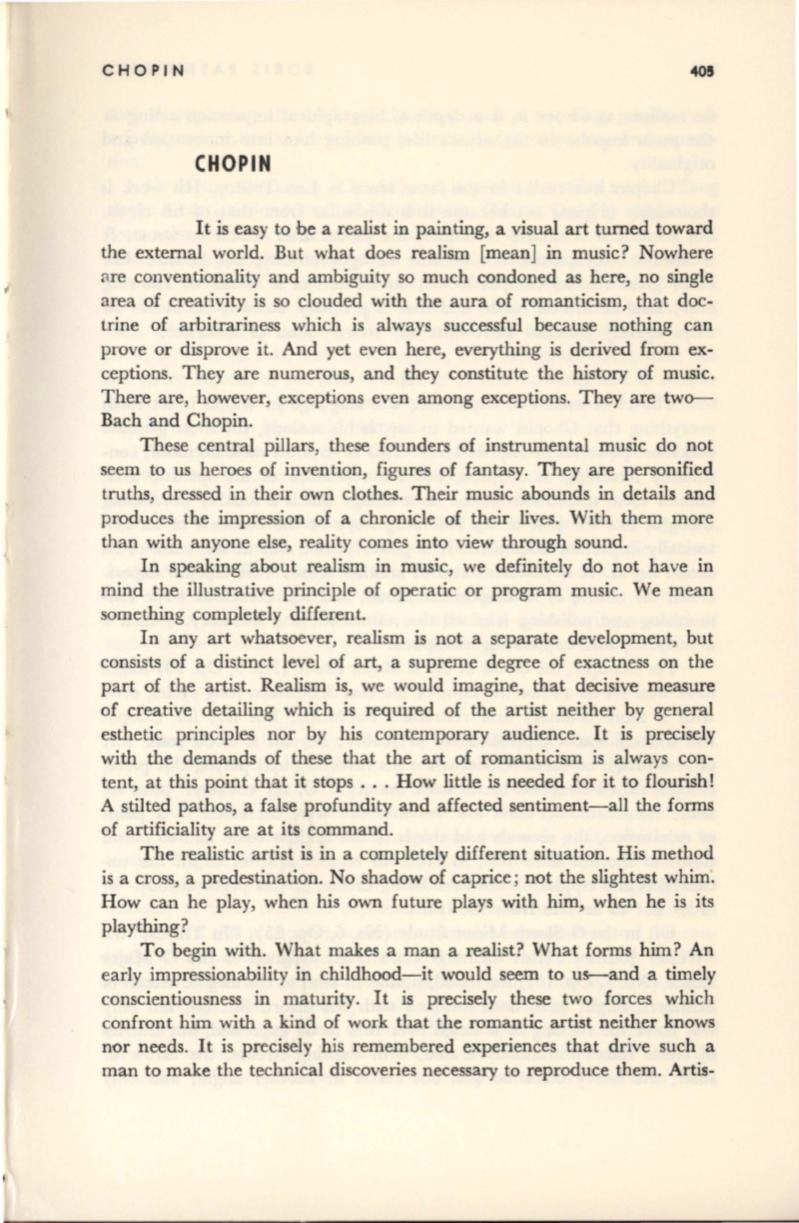
CHOPIN
<405
CHOPIN
It
is easy to be a realist in painting, a visual art turned toward
the external world. But what does realism [mean] in music? Nowhere
are conventionality and ambiguity so much condoned as here, no single
area of creativity is so clouded with the aura of romanticism, that doc–
trine of arbitrariness which is always successful because nothing can
prove or disprove it. And yet even here, everything is derived from ex–
ceptions. They are numerous, and they constitute the history of music.
There are, however, exceptions even among exceptions. They are two-–
Bach and Chopin.
These central pillars, these founders of instrumental music do not
seem to us heroes of invention, figures of fantasy. They are personified
truths, dressed in their own clothes. Their music abounds in details and
produces the impression of a chronicle of their lives. With them more
than with anyone else, reality comes into view through sound.
In speaking about realism in music, we definitely do not have in
mind the illustrative principle of operatic or program music. We mean
something completely different.
In any art whatsoever, realism is not a separate development, but
consists of a distinct level of art, a supreme degree of exactness on the
part of the artist. Realism is, we would imagine, that decisive measure
of creative detailing which is required of the artist neither by general
esthetic principles nor by his contemporary audience.
It
is precisely
with the demands of these that the art of romanticism is always con–
tent, at this point that it stops ... How little is needed for it to flourish!
A stilted pathos, a false profundity and affected sentiment-all the forms
of artificiality are at its command.
The realistic artist is in a completely different situation. His method
is a cross, a predestination. No shadow of caprice; not the slightest whim.
How can he play, when his own future plays with him, when he is its
plaything?
To begin with. What makes a man a realist? What forms him? An
early impressionability in childhood-it would seem to us-and a timely
conscientiousness in maturity. It is precisely these two forces which
confront him with a kind of work that the romantic artist neither knows
nor needs. It is precisely his remembered experiences that drive such a
man to make the technical discoveries necessary to reproduce them. Artis-


